


© 2018 www.esther-

Village (20.02.2010)
This is one of „our“ villages. Around 30 to 70 families are living in such a place. The living conditions vary widely between the areas but also between the villages in one area. For our project we chose villages which are rather poor. Life there is quite different from what we know in Europe: there is no electricity, no toilets and there is often only a single source of water for the whole villlage.
House (20.02.2010)
This is how houses typically look like in Laos. But today they are mainly found in the villages. In the cities they are first build also like this, but later on they close the downer part with bricks and concrete. Then they use the level on the ground as living room and the upper one for sleeping. And even in Attapeu there are today many huge houses which are for our taste a bit pretentious, but building is not as expensive here as in Europe and the taste is also quite different.
In this house we stayed over night during one of our field trips. The distances are just to far to come back every day.
Overnight stay (20.02.2010)
This is how the room looks from inside. But this is not the actual living room of the family. We were not allowed to enter into that part of the house, because it might annoy the spirits when strangers are entering to the living room. But this kind of rules differ from village to village. It is important to be very careful in everything. We always come with our sleepingbags and all food we need and then we are just sleeping on the floor like the people here do. It takes some time to get used but it is ok.
Kitchen (20.02.2010)
The kitchen is usually in a separate room on the same level as the living rooms. Firewood is used for preparing food and boiling water.
Here you can see the preparation of the main food: sticky rice. After soaking it
for several hours in water it is boiled just in water vapour so that it is really
sticky in the end and therefore easy to eat with fingers -
Watersource (20.02.2010)
The source of water differs between the villages. In the mountains, water comes usually from naturals springs while most villages in the plains use the water of rivers. Here it is the Sekong, a big river which forms part of the border between Laos and Cambodge. At this place, an important part of the village life can be observed: people are fishing, bathing, washing their clothes and fetching water. Many even drink the water directly from the river without boiling or treating it.
Fetching water (20.02.2010)
This is one of the 2 „roads“ between the villlage and the river. It is really no fun to go there every day to fetch water. And most of the time it is women and children who are responsible for it. But at least the river is big enough so that there is always enough water available.
Road (20.02.2010)
We are lucky because some of the roads were just recently renovated. And even if they are not tarmacked it is still possible to reach relatively fast and safe. But some villages are still very far and sometimes it is necessary to go a long way round if we want to reach there by car. This was e.g. one on those roads we had to take (the alternative would have been to go by boat). It took us more than one hour with an average speed of 15 km/h but finally we reached. But when the raining season starts this village will be not accessible anymore.
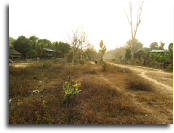
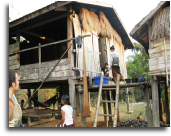
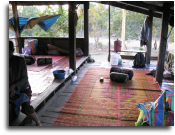
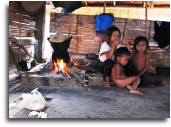
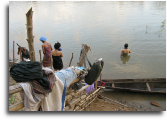
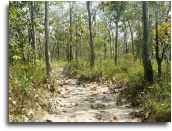
Pictures from Laos: First impressions
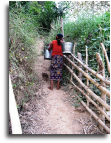
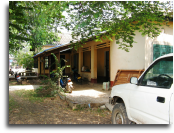
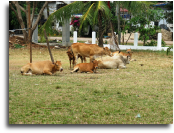
SFE Office (20.02.2010)
This building is the SFE office in Attapeu. Here I am working now -
Cows (20.02.2010)
The office is situated within the hospital area in Attapeu. I don’t think that I will be very much involved in the hospital work, but still it is good to be here and to have connections to the people from the hospital. In the moment, they are trying to install a fence around the hospital. Some people ask if this is really necessary, but if you look out of our office window the reason becomes evident: a herd of cows, pigs, lots of chicken and dogs... And all this in the hospital is maybe not the best way of disease prevention.
Brownbear (20.02.2010)
This poor fellow was caught in the forest by some locals. Now he is sitting in this small cage just some houses away from us. People here have a very high demand for this kind of wild animals because they are used to make traditional medicine. Surely no one thinks about protection of animals as we are used to do...

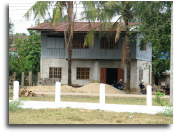
Typical Lao-
This is now one of the typical houses for cities. Most of the time iron sheets are used for roofing and as already described above, the upper etage is made out of wood while the downer one is built with bricks. Sometimes there is a nice terrasse in the wooden part.
In the moment I am looking for accomodation for myself, but it is not so easy to decide. I like this traditional houses: The wood part better in the heat and they are relatively cheap. But modern houses are more comfortable and more adapted to our habits.